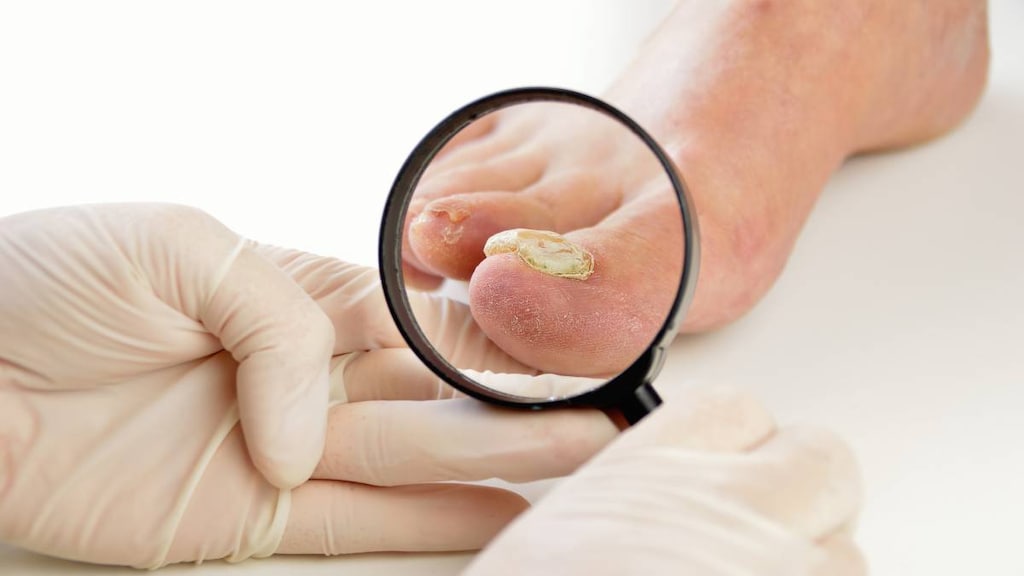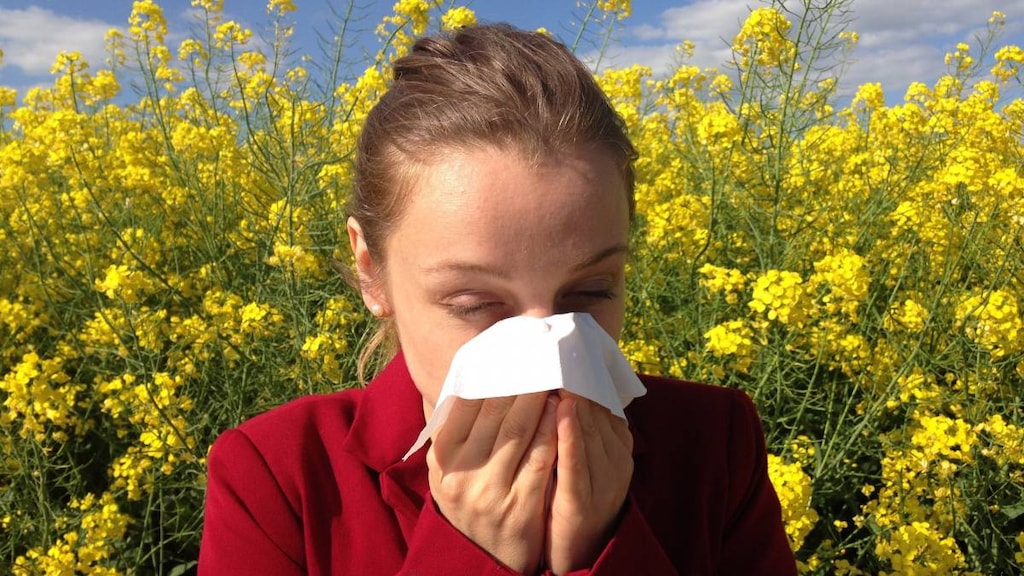Dosage Forms
Excipient information presented when available (limited, particularly for generics); consult specific product labeling. [DSC] = Discontinued product
Cream, External, as dipropionate [strength expressed as base]:
Generic: 0.05% (15 g, 45 g)
Cream, External, as dipropionate augmented [strength expressed as base]:
Diprolene AF: 0.05% (15 g, 50 g)
Generic: 0.05% (15 g, 50 g)
Cream, External, as valerate [strength expressed as base]:
Generic: 0.1% (15 g, 45 g)
Emulsion, External, as dipropionate [strength expressed as base]:
Sernivo: 0.05% (120 mL) [contains cetostearyl alcohol, methylparaben, propylparaben]
Foam, External, as valerate:
Luxiq: 0.12% (50 g [DSC], 100 g [DSC]) [contains alcohol, usp, cetyl alcohol, propylene glycol]
Luxiq: 0.12% (50 g, 100 g) [cfc free; contains alcohol, usp, cetyl alcohol, propylene glycol]
Generic: 0.12% (50 g, 100 g)
Gel, External, as dipropionate augmented [strength expressed as base]:
AlphaTrex: 0.05% (15 g [DSC], 50 g [DSC])
Generic: 0.05% (15 g, 50 g)
Lotion, External, as dipropionate [strength expressed as base]:
Generic: 0.05% (60 mL)
Lotion, External, as dipropionate augmented [strength expressed as base]:
Diprolene: 0.05% (30 mL [DSC], 60 mL [DSC]) [contains isopropyl alcohol, propylene glycol]
Generic: 0.05% (30 mL, 60 mL)
Lotion, External, as valerate [strength expressed as base]:
Generic: 0.1% (60 mL)
Ointment, External, as dipropionate [strength expressed as base]:
Generic: 0.05% (15 g, 45 g)
Ointment, External, as dipropionate augmented [strength expressed as base]:
Diprolene: 0.05% (15 g, 50 g)
Generic: 0.05% (15 g, 45 g, 50 g)
Ointment, External, as valerate [strength expressed as base]:
Generic: 0.1% (15 g, 45 g)
Pharmacology
Mechanism of Action
Topical corticosteroids have anti-inflammatory, antipruritic, and vasoconstrictive properties. May depress the formation, release, and activity of endogenous chemical mediators of inflammation (kinins, histamine, liposomal enzymes, prostaglandins) through the induction of phospholipase A2 inhibitory proteins (lipocortins) and sequential inhibition of the release of arachidonic acid. Betamethasone has intermediate to very high range potency (dosage-form dependent).
Pharmacokinetics/Pharmacodynamics
Absorption
Topical corticosteroids are absorbed percutaneously. The extent of absorption is dependent on several factors, including epidermal integrity (intact vs abraded skin), formulation, age of the patient, prolonged duration of use, and the use of occlusive dressings. Percutaneous absorption of topical steroids is increased in neonates (especially preterm neonates), infants, and young children.
Metabolism
Hepatic
Excretion
Urine and bile
Use: Labeled Indications
Dermatoses: Relief of inflammatory and pruritic manifestations of corticosteroid-responsive dermatoses.
Dermatoses of the scalp (foam): Relief of inflammatory and pruritic manifestations of corticosteroid-responsive dermatoses of the scalp.
Plaque psoriasis (spray; patch [Canadian product]): Treatment of mild to moderate plaque psoriasis in patients 18 years and older.
Contraindications
Hypersensitivity to betamethasone, other corticosteroids, or any component of the formulation
Cream, Lotion: Untreated bacterial, tubercular, and fungal skin infections; viral diseases (eg, herpes simplex, chicken pox, vaccinia)
Canadian labeling: Additional contraindications (not in US labeling): Treatment of rosacea, acne vulgaris, perioral dermatitis, or pruritus without inflammation (foam); skin manifestations relating to tuberculosis or syphilis, eruptions following vaccinations; application to eyes (foam); <18 years of age (patch). Note: Product labels may vary (refer also to product labels).
Dosage and Administration
Dosing: Adult
Note: Base dosage on severity of disease and patient response. Use lowest dose possible for shortest period of time to avoid HPA axis suppression. Therapy should be discontinued when control is achieved.
Corticosteroid-responsive dermatoses: Topical:
Cream, augmented formulation: Betamethasone dipropionate 0.05%: Apply once or twice daily (maximum: 50 g weekly).
Cream, unaugmented formulation:
Betamethasone dipropionate 0.05%: Apply once daily; may increase to twice daily if needed
Betamethasone valerate 0.1%: Apply 1 to 3 times daily. Note: Once- or twice-daily applications are usually effective.
Foam: Apply to the scalp twice daily, once in the morning and once at night. Note: Reassess if no improvement after 2 weeks of treatment.
Gel, augmented formulation: Apply once or twice daily; rub in gently (maximum: 50 g weekly). Note: Reassess if no improvement after 2 weeks of treatment.
Lotion, augmented formulation: Betamethasone dipropionate 0.05%: Apply a few drops once or twice daily (maximum: 50 mL weekly). Note: Reassess if no improvement after 2 weeks of treatment.
Lotion, unaugmented formulation:
Betamethasone dipropionate 0.05%: Apply a few drops twice daily
Betamethasone valerate 0.1%: Apply a few drops twice daily; may consider increasing dose for resistant cases. Following improvement, may apply once daily.
Ointment, augmented formulation: Betamethasone dipropionate 0.05%: Apply once or twice daily (maximum: 50 g weekly). Note: Reassess if no improvement after 2 weeks of treatment.
Ointment, unaugmented formulation:
Betamethasone dipropionate 0.05%: Apply once daily; may increase to twice daily if needed
Betamethasone valerate 0.1%: Apply 1 to 3 times daily. Note: Once- or twice-daily applications are usually effective.
Plaque psoriasis: Topical:
Patch [Canadian product]: Betamethasone valerate: Apply 1 patch (2.25 mg) to each affected area once daily [up to 5 patches (11.25 mg) may be applied daily]; maximum duration of therapy: 30 days.
Spray, unaugmented formulation: Betamethasone dipropionate 0.05%: Apply twice daily for up to 4 weeks
Dosing: Geriatric
Refer to adult dosing. Use the lowest effective dose.
Dosing: Pediatric
Note: Dosage should be based on severity of disease and patient response; use smallest amount for shortest period of time to avoid HPA axis suppression. Therapy should be discontinued when control is achieved.
Dermatoses (corticosteroid-responsive): Topical:
Betamethasone valerate:
Cream/ointment: Children and Adolescents: Apply a thin film to the affected area once to 3 times daily; usually once or twice daily application is effective.
Lotion: Children and Adolescents: Apply a few drops to the affected area twice daily; in some cases, more frequent application may be necessary; following improvement reduce to once daily application
Betamethasone dipropionate (augmented formulation):
Cream/ointment: Adolescents: Apply a thin film to affected area once or twice daily; maximum dose: 50 g/week; evaluate continuation of therapy if no improvement within 2 weeks of treatment.
Gel: Children and Adolescents ≥12 years: Apply a thin layer to the affected area once or twice daily; rub in gently; maximum dose: 50 g/week; not recommended for use longer than 2 weeks
Lotion: Adolescents: Apply a few drops to the affected area once or twice daily; rub in gently; maximum dose: 50 mL/week; not recommended for use for longer than 2 weeks.
Administration
Topical:
Cream, ointment: Apply topical sparingly to affected areas. Not for use on broken skin or in areas of infection. Do not apply to wet skin unless directed; do not cover with occlusive dressing. Do not apply very high potency agents to face, groin, axillae, or diaper area. Not for oral, ophthalmic, or intravaginal use. Wash hands after use.
Lotion: Apply topical sparingly to affected areas. Massage in gently until lotion disappears. Not for use on broken skin or in areas of infection. Do not apply to wet skin unless directed; do not cover with occlusive dressing. Do not apply very high potency agents to face, groin, axillae, or diaper area. Not for oral, ophthalmic, or intravaginal use. Wash hands after use.
Foam: Invert can and dispense a small amount onto a saucer or other cool surface. Do not dispense directly into hands. Pick up small amounts of foam and gently massage into affected areas until foam disappears. Repeat until entire affected scalp area is treated. Do not cover with occlusive dressing unless directed otherwise by health care provider. Not for ophthalmic use. Avoid getting into eyes.
Patch [Canadian product]: Clean and dry area to be treated prior to each application. May cut patch to size to cover lesion. Peel off protective film and apply adhesive medicated side to affected area; patch should be worn for 20 to 24 hours. After removing patch wait at least 30 minutes before applying a new one. Keep dry; if patch becomes wet, remove and wait until next scheduled dose before applying a new one. Do not cover with occlusive dressing. Patch should not be reused if it comes off; if edges of patch start to lift, apply medical adhesive tape to detached part only.
Spray: Spray directly onto affected areas (spray only enough to sufficiently cover the area); rub in gently and wash hands after applying. Shake well before use. Do not use if atrophy is present at the treatment site. Do not cover with occlusive dressing unless directed otherwise by health care provider. For topical use only; not for oral, ophthalmic or vaginal use; avoid use on the face, scalp, axilla, groin, or other intertriginous areas.
Storage
Cream, lotion, ointment, spray: Store at 15°C to 30°C (59°F to 86°F). Discard any unused spray after 4 weeks.
Foam: Store at 20°C to 25°C (68°F to 77°F). Avoid fire, flame, or smoking during use. Do not puncture or incinerate container. Do not expose to heat or store at temperatures above 49°C (120°F).
Patch [Canadian product]: Store at 15°C to 25°C (59°F to 77°F). Use immediately after opening sachet.
Drug Interactions
Aldesleukin: Corticosteroids may diminish the antineoplastic effect of Aldesleukin. Avoid combination
Corticorelin: Corticosteroids may diminish the therapeutic effect of Corticorelin. Specifically, the plasma ACTH response to corticorelin may be blunted by recent or current corticosteroid therapy. Monitor therapy
Deferasirox: Corticosteroids may enhance the adverse/toxic effect of Deferasirox. Specifically, the risk for GI ulceration/irritation or GI bleeding may be increased. Monitor therapy
Hyaluronidase: Corticosteroids may diminish the therapeutic effect of Hyaluronidase. Management: Patients receiving corticosteroids (particularly at larger doses) may not experience the desired clinical response to standard doses of hyaluronidase. Larger doses of hyaluronidase may be required. Consider therapy modification
Ritodrine: Corticosteroids may enhance the adverse/toxic effect of Ritodrine. Monitor therapy
Test Interactions
May suppress the wheal and flare reactions to skin test antigens
Adverse Reactions
>10%: Local: Application site reactions (54%; includes burning, stinging, and itching; most reactions were mild)
1% to 10%:
Central nervous system: Paresthesia (2%)
Dermatologic: Acne vulgaris (2%), alopecia (2%), pruritus (≤2%)
Ophthalmic: Conjunctivitis (2%)
Frequency not defined: Endocrine & metabolic: HPA axis suppression
<1%, postmarketing, and/or case reports: Bullous dermatitis, cataract, contact dermatitis, dermatitis, dysgeusia, erythema, erythematous rash, folliculitis, glaucoma, hyperglycemia, hypersensitivity reaction, increased intraocular pressure, localized vesiculation, retinopathy (central serous), skin discoloration, skin rash, telangiectasia
Warnings/Precautions
Concerns related to adverse effects:
- Adrenal suppression: May cause hypercortisolism or suppression of hypothalamic-pituitary-adrenal (HPA) axis, particularly in younger children or in patients receiving high doses for prolonged periods. HPA axis suppression may lead to adrenal crisis.
- Contact dermatitis: Allergic contact dermatitis can occur and is usually diagnosed by failure to heal rather than clinical exacerbation; discontinue use if irritation occurs and treat appropriately.
- Immunosuppression: Prolonged use of corticosteroids may also increase the incidence of secondary infection, mask acute infection (including fungal infections), prolong or exacerbate viral infections, or limit response to vaccines. Exposure to varicella zoster (chickenpox) should be avoided; corticosteroids should not be used to treat ocular herpes simplex.
- Ocular effects: Topical corticosteroids, including betamethasone, may increase the risk of posterior subcapsular cataracts and glaucoma. Monitor for ocular symptoms. Avoid contact with eyes.
- Skin reactions: Discontinue if skin irritation or contact dermatitis occurs; do not use in patients with decreased skin circulation.
- Systemic effects: Topical corticosteroids may be absorbed percutaneously. Absorption of topical corticosteroids may cause manifestations of Cushing syndrome (rare), hyperglycemia, or glycosuria. Absorption is increased by the use of occlusive dressings, application to denuded skin, application to large surface areas, or prolonged use.
Concurrent drug therapy issues:
- Drug-drug interactions: Potentially significant interactions may exist, requiring dose or frequency adjustment, additional monitoring, and/or selection of alternative therapy. Consult drug interactions database for more detailed information.
Special populations:
- Pediatric: Use of augmented formulations in patients <13 years of age is not recommended. For all formulations, children may absorb proportionally larger amounts after topical application and may be more prone to systemic effects. HPA axis suppression, intracranial hypertension, and Cushing syndrome have been reported in children receiving topical corticosteroids. Prolonged use may affect growth velocity; growth should be routinely monitored in pediatric patients. Use lowest dose possible for shortest period of time to avoid HPA axis suppression.
Dosage form specific issues:
- Appropriate use: For topical use only; avoid contact with eyes. Not for oral, ophthalmic, or intravaginal use. Do not use occlusive dressings on weeping or exudative lesions and general caution with occlusive dressings should be observed; adverse effects may be increased. In the presence of a fungal or bacterial dermatologic infection, institute appropriate antifungal or antibacterial therapy. If the infection does not resolve promptly, discontinue use until the infection has been adequately controlled.
- Augmented (eg, very high potency) products: Use of augmented formulations in patients <13 years of age is not recommended. Not for treatment of rosacea, perioral dermatitis, or if skin atrophy is present at treatment site; not for facial, groin, axillary, oral, ophthalmic, or intravaginal use; not for use in a diapered area. Avoid concurrent use of other corticosteroids.
- Flammable contents: Foam contains flammable propellants. Avoid fire, flame and smoking during and immediately following administration.
- Patch [Canadian product]: Has not been studied in psoriasis of the face, scalp or intertriginous areas; contains methyl and propyl parahydroxybenzoate, which may cause hypersensitivity (sometimes delayed).
Other warnings/precautions:
- Discontinuation of therapy: Withdraw therapy with gradual tapering of dose by reducing the frequency of application or substitution of a less potent steroid.
Monitoring Parameters
HPA axis suppression and adrenal insufficiency, especially in children or with augmented formulation use; ocular symptoms. Foam, gel, lotion (augmented), and ointment (augmented): reassess if no improvement after 2 weeks of treatment.
Pregnancy
Pregnancy Considerations
Systemic bioavailability of topical corticosteroids is variable (eg, integrity of skin, use of occlusion) and may be further influenced by trimester of pregnancy (Chi 2017). In general, the use of topical corticosteroids is not associated with a significant risk of adverse pregnancy outcomes. However, there may be an increased risk of low birth weight infants following maternal use of potent or very potent topical products, especially in high doses.
Use of mild to moderate potency topical corticosteroids is preferred in pregnant females, and the use of large amounts or use for prolonged periods of time should be avoided (Chi 2016; Chi 2017; Murase 2014). Also avoid areas of high percutaneous absorption (Chi 2017). The risk of stretch marks may be increased with use of topical corticosteroids (Murase 2014).
Patient Education
What is this drug used for?
- It is used to treat psoriasis.
- It is used to treat skin irritation.
- It is used to treat skin rashes.
- It is used to treat scalp irritation.
- It is used to treat scalp psoriasis.
- It is used to treat plaque psoriasis.
- It may be given to you for other reasons. Talk with the doctor.
Frequently reported side effects of this drug
- Dry skin
- Stinging
- Burning
- Itching
Other side effects of this drug: Talk with your doctor right away if you have any of these signs of:
- Cushing syndrome like weight gain in upper back or abdomen; moon face; severe headache; or slow healing
- Adrenal gland problems like severe nausea, vomiting, severe dizziness, passing out, muscle weakness, severe fatigue, mood changes, lack of appetite, or weight loss
- High blood sugar like confusion, fatigue, increased thirst, increased hunger, passing a lot of urine, flushing, fast breathing, or breath that smells like fruit
- Skin changes like acne, stretch marks, slow healing, or hair growth
- Vision changes
- Skin thinning
- Skin irritation
- Signs of a significant reaction like wheezing; chest tightness; fever; itching; bad cough; blue skin color; seizures; or swelling of face, lips, tongue, or throat.
Note: This is not a comprehensive list of all side effects. Talk to your doctor if you have questions.
Consumer Information Use and Disclaimer: This information should not be used to decide whether or not to take this medicine or any other medicine. Only the healthcare provider has the knowledge and training to decide which medicines are right for a specific patient. This information does not endorse any medicine as safe, effective, or approved for treating any patient or health condition. This is only a brief summary of general information about this medicine. It does NOT include all information about the possible uses, directions, warnings, precautions, interactions, adverse effects, or risks that may apply to this medicine. This information is not specific medical advice and does not replace information you receive from the healthcare provider. You must talk with the healthcare provider for complete information about the risks and benefits of using this medicine.




